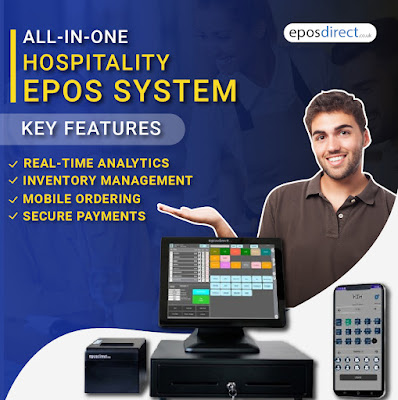In recent years, the hospitality industry has moved from being
wary of digitization to embracing technology. Restaurants now have tools that
help them manage all front and back aspects of the home: reservations,
staffing, inventory, loyalty programs, takeout and delivery, and more.
While this allows them to do more for less, it also creates a
situation where they have four or five stand-alone technology solutions that
work independently. However, when two apps share data, you can connect the dots
and get a much bigger picture.
Now, let's take a look at 10 POS integrations that will help you
improve the efficiency of your restaurant:
1. Loyalty app
Loyalty app linked to your electronic point of sale, you can attract more recurring consumers. With the help of
loyalty programs, your customers can earn incentive points or get a certain
percentage every time they purchase your establishment. These apps appeal to
the younger generation, who love to download and use apps and encourage regular
customers to choose your restaurant.
The powerful loyalty app programming can also provide
time-limited and automated messages for discounts, as well as ways to integrate
them into the app.
2. Discovery app
Yelp, Zagat, Eat App and TripAdvisor are just a few apps that
can help hungry diners find their next meal. These apps are often used by young
diners to find the best restaurants nearby or while travelling. Make sure your
location ranks well on restaurant mobile apps to attract customers. Promote
these apps directly and invite your customers to share reviews and photos.
3. Order online
Your customers can order pick up or delivery from their phone or
tablet using online ordering apps integrated with epos
software for takeaway installed on
your epos system. Buying food and items can be made easier using online
ordering apps, which can be set up through a point-of-sale system or as a
stand-alone ordering kiosk.
4. Table management and reservation platform
If you want to improve customer service, integrating reservation
and table management is essential for restaurants, especially for busy venues
with long waiting lists and many tables. Customers can use booking apps to
make, change, and cancel reservations without your staff. Ordering time, the
right time to sit down, and kitchen workloads can all be improved with
automated table monitoring and management. Plus, it improves employees' ability
to deliver superior customer service.
5. HR and Staffing Apps
Staffing and human resources apps now allow potential employees
to sign up, join, and maintain virtual timesheets. Human resources are no
longer a world of mountains of paperwork, tax forms and benefits tracking can
be done in these powerful apps. Even if not all HR components are fully
integrated with your POS, application reports can still be loaded (and vice
versa). The most recent apps will integrate both payroll and timekeeping
processes.
6. Planning Tool
Not surprisingly, employment in the hospitality industry is
sporadic. There is nothing more tedious than scheduling an employee week after
week only to discover that a waiter is about to request time off or is about to
work overtime. Regardless of your experience with schedules, mistakes always
happen. With connectors that record time off requests, track overtime, and make
it easier for employees to change shifts, you can eliminate scheduling errors
and increase efficiency. By eliminating scheduling conflicts, your restaurant
can maintain enough staff without any hassle, leaving you more time to focus on
delivering outstanding customer service.
7. Protection against loss of income
Free drinks, unnecessary rewards, and unused inventory may seem
like small losses at first, but over time these poorly managed errors can add
up and cost your business a lot of money. Unfortunately, employee error or
theft is the cause of most losses. Fortunately, this can be avoided with an
integrated tracking system with epos software.
Robust reporting procedures are eliminated by using secure point-of-sale
accounting software like QuickBooks, which reports revenue, loss, and profit
expenses in real-time. Instead, these cloud-based features monitor real-time
inventory adjustments and record balances and transactions. Implementing a
point-of-sale system with built-in loss prevention and security measures helps
maintain accurate inventory management, boost employee morale, and keep your
business profitable.
8. Direct Marketing
Epos system for hospitality and
loyalty apps can simply be combined with geo-fenced marketing materials like
today's promotions. Customers inside or outside the geofence can receive
personalized messages through the loyalty app itself, based on their
preferences. For example, if a consumer is at another property near your restaurant
and hears about the promotion, they are more likely to stop by for a snack and
a cup of coffee that afternoon.
9. Remote Management Tools
Any restaurant owner can improve the look and feel of their
establishment by abandoning bulky outdated devices and switching to an Android
tablet or iPad to take orders and process payments. The flexibility of remote
administration is just another great benefit of a POS application. With POS
apps, you can access the cloud-based dashboard from anywhere you have an internet
connection and review your reports there.
10. Menu management application
By integrating your menu management tool, you can design custom icons that can be colour-coded according to significant health issues, such as allergies, diabetes, high sodium options or low calories. Staff can communicate more effectively with customers about menu ingredients using icons that can be quickly identified and categorized.


No comments:
Post a Comment